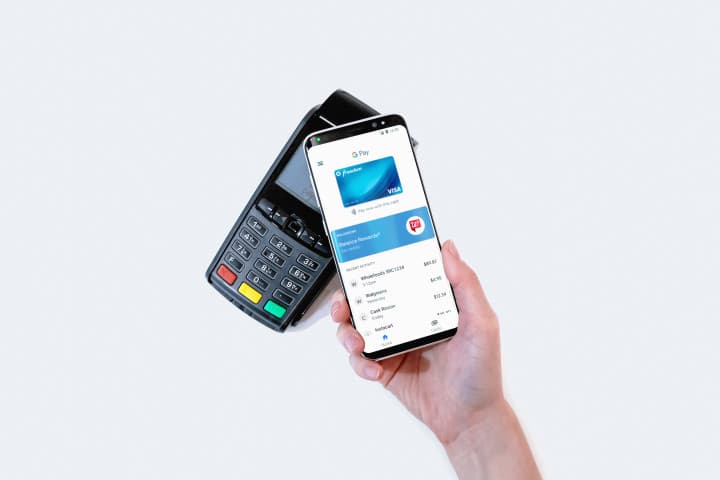In the era of technology-led banking, mastering the login process for your credit card account online is of utmost importance. With growing trends towards paperless transactions and digital banking, using traditional in-person banking methods is gradually becoming outdated.
Having an extensive understanding of online banking, from the underlying basics such as SSL encryption and how secure transactions take place, to recognizing potential phishing scams, is crucial. Once you have enrolled for online access and become familiar with your login process for beginners provider’s unique website layout, efficiently managing your credit card online becomes an effortless job.
At times, you may run into some bumps along the way like credit card login online errors, but don’t worry—this guide will help you troubleshoot these problems effectively.
Understanding Online Banking
Understanding the Basics of Online Banking
Online banking is a service provided by banks that allows you to carry out banking activities via the internet. This includes tasks such as checking your account balance, paying bills, and transferring funds between accounts. The majority of credit cards are supported by trustworthy banks, which means they possess online banking facilities that their customers can use.
Knowing About Banking Websites
To start using online banking, navigate to your credit card provider’s website, which is usually named after the bank, like www.chase.com for Chase Bank or www.wellsfargo.com for Wells Fargo. Make sure to always type the website address directly into your web browser; never follow links from emails or third-party sites, as these could lead to phishing scams—more on that later.
SSL Encryption and Security
Financial institutions use SSL (Secure Sockets Layer) encryption to protect your data as it travels over the internet. This means that any information you enter into the website—like your username, password, or account number—is scrambled when sent from your computer to the bank’s server, making it virtually impossible for cybercriminals to intercept. Look for “https://” at the start of the web address to ensure your connection is secure; the “s” stands for “secure.”
Understanding Security Credentials
When you set up online banking with your credit card provider, you’ll be asked to create security credentials. This typically consists of a username (or user ID) and a secure password. Often, you’ll also be asked to set up security questions or a two-factor authentication method as an extra layer of security. These credentials are used to verify your identity each time you log in.
Carrying Out Transactions Securely
With online banking, you can carry out a multitude of tasks including checking your credit card balance, paying bills, and making fund transfers. All your transactions are carried out securely thanks to encryption. Always remember to log out of your online banking session after finishing your transactions to ensure your account information remains secure.
Being Aware of Phishing Scams
Phishing scams are cunning methods used by cybercriminals to trick you into divulging your sensitive information. This is usually done through seemingly legitimate emails or websites that convince you to enter your username, password, or credit card login details. Always remember to directly navigate to your bank’s website, and never enter your details on a website linked from an email. Banks will never ask you for sensitive information via email.
Learning how to safely and efficiently use online banking for your credit card can offer numerous benefits, from convenient access to your financial information to the ability to make payments quickly and easily. By understanding these key aspects of online banking, you are well-equipped to start banking online securely with your credit card.

How to Set Up Online Account Enrollment
Enroll for Online Account Management
To begin the process of enrollment for online account management, find and visit your credit card provider’s website. Usually, you will find a link for online account registration either in the main menu or near the login area. Usually, this is labeled as ‘enroll’, ‘register’, ‘sign up’, or ‘create an account’.
Design a Unique Username and Password
Once on the registration page, you’ll usually be prompted to create a unique username and password. This serves as your primary form of identification for online banking. It is recommended to use a combination of letters, numbers, and special characters in your passwords to boost security. Again, every bank’s process is slightly different, so the order of these steps may vary.
Provide Personal and Account Information
Websites typically request for your personal information like your name, address, date of birth, and social security number for verifying your identity. Additionally, you’ll have to provide your credit card info such as the number, expiration date, and security code.
Set up Security Questions and Answers
Another crucial part of enrolling in online banking is setting up security questions. These questions can range from asking your mother’s maiden name to the name of your first pet. The answers to these questions are pivotal, as they will be used in identity verification if you ever forget your password or login details.
Register Device for Added Security
Certain banks or credit card providers offer the ability to register your specific device, be it your personal computer, laptop, or smart device, for added security during the login process. Choosing to register your device can prevent anyone else from accessing your account even if they have your login details.
Complete The Enrollment Process
After you’ve filled out all the necessary info and agreed to the terms and conditions, usually by clicking a box or button stating ‘I Agree’, then you can finalize your enrollment. You will typically receive a confirmation email to the address you provided during the sign-up process.
Account Verification
Before using your account, many credit card providers require you to verify your account through a verification link sent to your email. Follow the link in that email and provide any required information to confirm your account. You’ll then be able to use your newly created login details to have online access to your credit card account.
Remember, it is crucial to never share these login details with anyone as this is a critical part of maintaining the security of your financial information.

Navigating Credit Card Provider’s Website
Understanding Your Credit Card Provider’s Website Interface
To successfully log into your online credit card account, you first need to ensure you understand how your specific credit card provider’s website interface works. This step may differ based on whether you’re dealing with a bank, such as Chase or Citi, or a card provider like Visa, Mastercard, or American Express. Most providers’ websites will have headings such as “Personal”, “Business”, “Wealth Management”, etc. Alongside these, you’ll typically see a “Login” or “Sign In” option.
Finding the Login Area on the Website
Locating the login area is an essential initial step. The login area is usually found on the homepage of the credit card provider’s website. It’s normally placed in an easily visible and accessible location, such as the top right corner of the webpage. Again, this can vary slightly among different providers, but universally, you’re looking for a button or link that says “Login”.
Inputting Your Login Credentials
Once you’ve located the login button or link and clicked on it, you’ll be directed to a new page where you can enter your login credentials. This is usually your username or email and your password. It’s highly advised to create a strong, unique password and avoid sharing it with others to protect your financial information.
Navigating the Account Dashboard
After a successful login, your account dashboard is typically displayed. Here, it’s important to familiarize yourself with the layout to efficiently manage your credit card. There should be clear tabs or menus displayed indicating various functions such as reviewing your transactions, paying your bills, or checking your reward points. There may also be supportive materials like FAQs or customer support contact details if you encounter issues managing your account.
Making Most of Your Online Account Features
Your online account is more than just a platform for paying bills. It’s a tool you can use to monitor your credit card usage, track your spending, set up automatic payments, and manage your financial planning more effectively. These functionalities can be typically found under specific tabs common in most websites such as “Account Services”, “Bill Pay”, or “Card Management”.
Security Precautions When Logging Online
Considering the sensitivity of financial information, taking certain security measures while logging in online can be vital. Always make sure you’re using a secure network to log into your account, and never save your login details in a public computer or shared device. Additionally, regularly changing your password can help ensure your online credit card account’s security.

How to Troubleshoot Credit Card Login Errors
Understanding Reasons for Login Errors
There are several reasons why you might have trouble logging into your online credit card account. The most prevalent issues include forgotten credentials like usernames or passwords, account lockouts due to inputting incorrect data multiple times, and technical glitches on the provider’s end.
Forgotten Credentials
If you have forgotten your username or password, the solution is typically straightforward. Visit the credit card provider’s website and click on the login page. Under the login input fields, there should be an option that says “Forgot Username” or “Forgot Password”. Clicking on this will lead you to a recovery process, often requiring you to answer security questions or input data that confirms your identity, such as your credit card number or social security number. Once your identity has been confirmed, you’ll be able to reset your username or password accordingly.
Account Lockouts
If your account has been locked due to multiple unsuccessful login attempts, the process might be a bit more complicated. Mostly, your account will automatically unlock after a certain period, typically 24 hours. However, if you need immediate access, you can contact your credit card provider’s customer service for assistance. They can verify your identity using personal information and then manually unlock your account.
Technical Errors
If you’re sure your credentials are correct and you’re not locked out, but you’re still struggling to log in, it might be a technical issue on the provider’s end. Basic troubleshooting steps can include clearing your browser’s cache and cookies, or trying a different browser or device. If these actions do not resolve the issue, contacting customer service should be your next step.
Enabling Account Alerts
To help prevent these issues in the future, consider enabling account alerts if your provider offers this service. These alerts can help you stay updated on account changes, including repeated unsuccessful login attempts, which can act as an early warning system for potential problems or unauthorized activities. Remember, in navigating these issues, patience and caution are crucial to ensure your personal information remains safe and secure.

Photo by intenzafitness on Unsplash
Now that we’ve navigated the landscape of online credit card management, from understanding the foundational basics of online banking to maneuvering through the individual features of your credit card provider’s website, you are well-equipped to manage your credit card online.
Remember, the initial process of enrolling for online access and setting up your login credentials is a one-time inconvenience towards a world of convenience. Along the way, should you encounter any login issues, rest assured knowing that you can resolve them using the tools at your disposal. Continuing to stay informed about the evolving digital banking trends will empower you to handle your financial matters with confidence in a secure, user-friendly, and efficient environment.




